THE GRAY MAN (2022)
A CIA black-ops agent is targeted for assassination by his own colleagues.
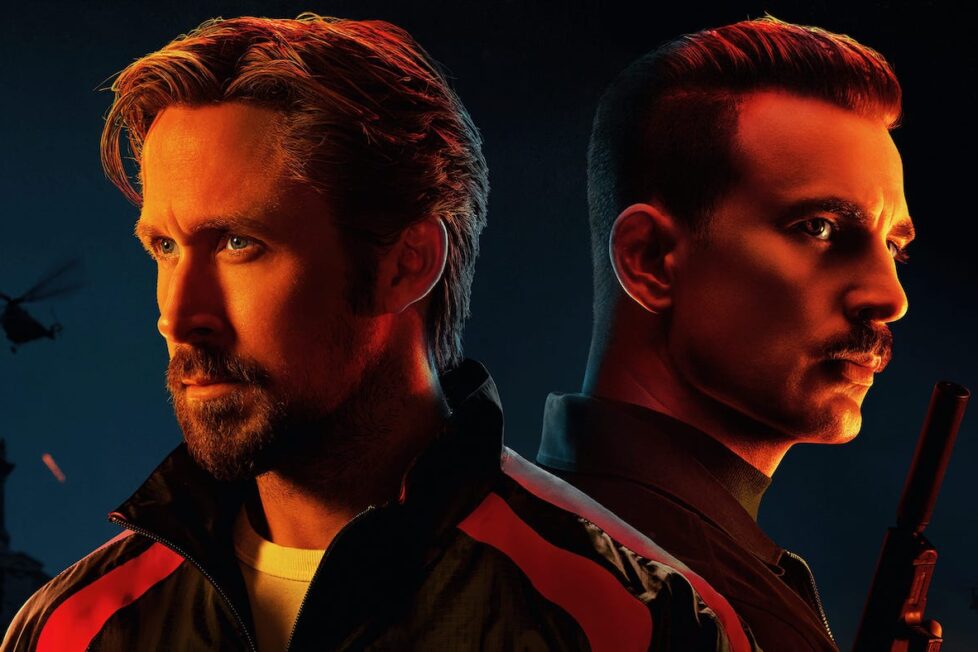
A CIA black-ops agent is targeted for assassination by his own colleagues.


Anthony and Joseph Russo are brothers best known for directing a string of Marvel Studios films—Captain America: The Winter Soldier (2014), Captain America: Civil War (2016), Avengers: Infinity War (2018) and the hugely successful Avengers: Endgame (2019)—but they demonstrated an interest in moving beyond superheroes with the ambitious and half-effective Cherry (2021), and now take a further step with The Gray Man.
This is more conventional in every way than Cherry, a spy-betrayed tale treading extremely familiar ground. It seems to aspire to combine the lone-operator-against-the-system paranoia of, say, the Jason Bourne films with the frothier escapades of James Bond. But for the most part, it fails—lacking both the real sense of peril and drive the Bourne movies had, and a recognition of its own silliness as with Bond.
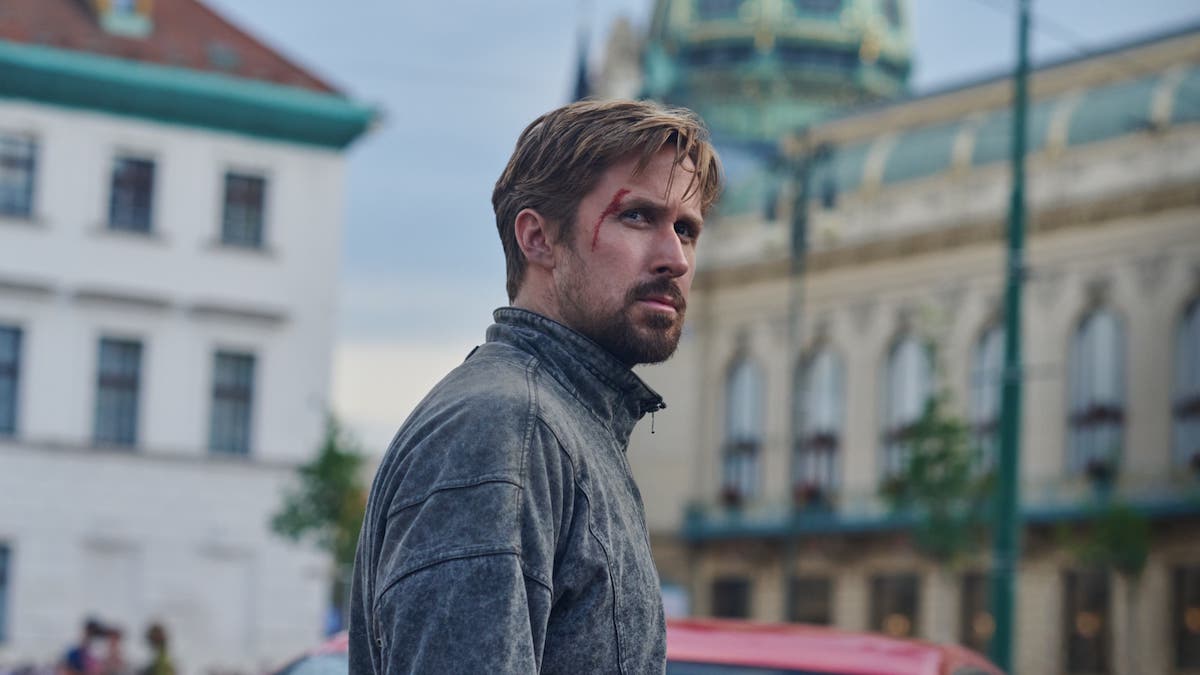
It lacks, too, any characters worthy of the name, and though it’s reportedly planned as the launchpad for a Gray Man franchise (Greaney’s written a worrying dozen books featuring the character), it’s difficult to imagine on the strength of this first outing there will be much to engage audiences further. Only those for whom the attraction of a film is measured in the number of vehicles and firearms it features are going to be satisfied by The Gray Man, and even they might well find that for all its frenetic editing and highly mobile camerawork (rushing, gliding, swooping) it’s an oddly slow and stagnant film.
The Gray Man begins in a Florida prison in 2003, with an inmate (Ryan Gosling) visited by CIA representative Fitzroy (Billy Bob Thornton), who makes him an offer: his freedom in exchange for a lifetime of service in the shadows of the agency, conducting deniable and deadly missions, his former identity wiped out.
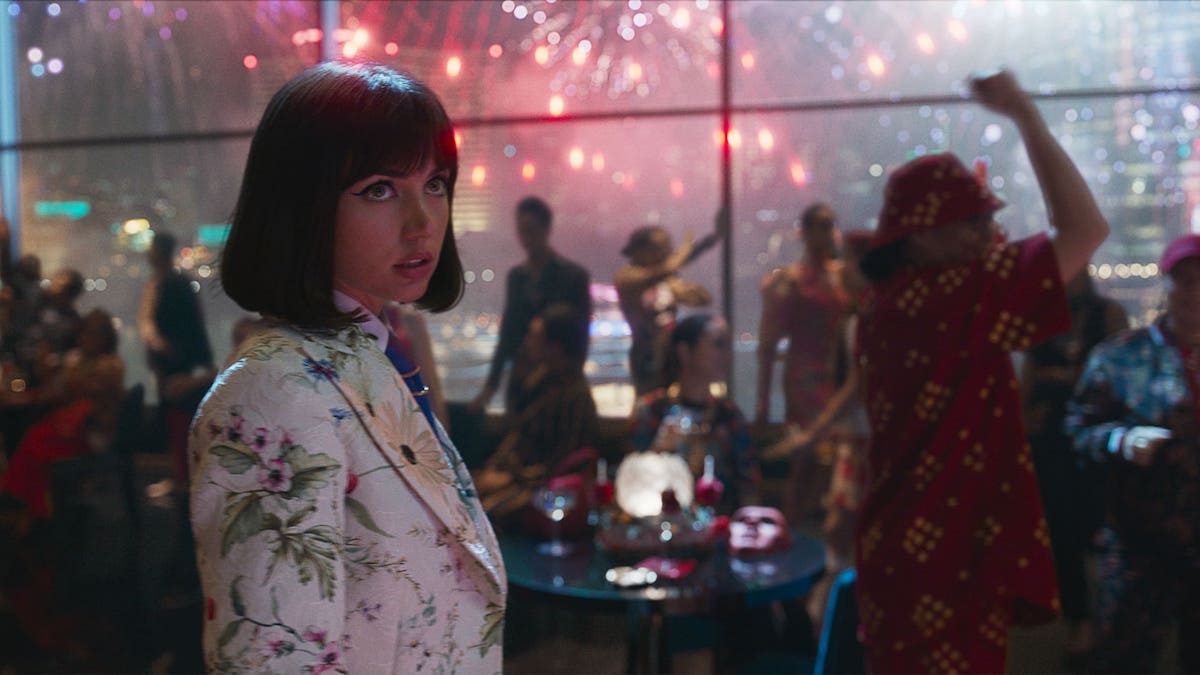
We then fast-forward to 2021 and a club in Thailand, where the ex-convict—now known as ‘Sierra Six’—is carrying out a covert assassination. The club is overwhelmingly colour-schemed and full of balloons, the assassination degenerates into hand-to-hand combat (of course), and moments of kinetic intensity are followed by moments of stillness. In other words, absolutely everything is purely for effect.
The semblance of a plot (and it’s never more than a standard-issue semblance) does soon emerge, though, when it becomes clear to Six that the CIA’s been engaged in dirty tricks, evidence for which is held on a miniature drive that’s come into his possession. It might seem pretty extraordinary that this possibility hasn’t occurred to Six before, since he’s apparently been murdering people on the agency’s behalf for nearly two decades…. but in any case, his own side—or what he thought was his own side—is soon hunting him, under the direction of the corrupt Carmichael (Regé-Jean Page) and hired killer Hansen (Chris Evans).
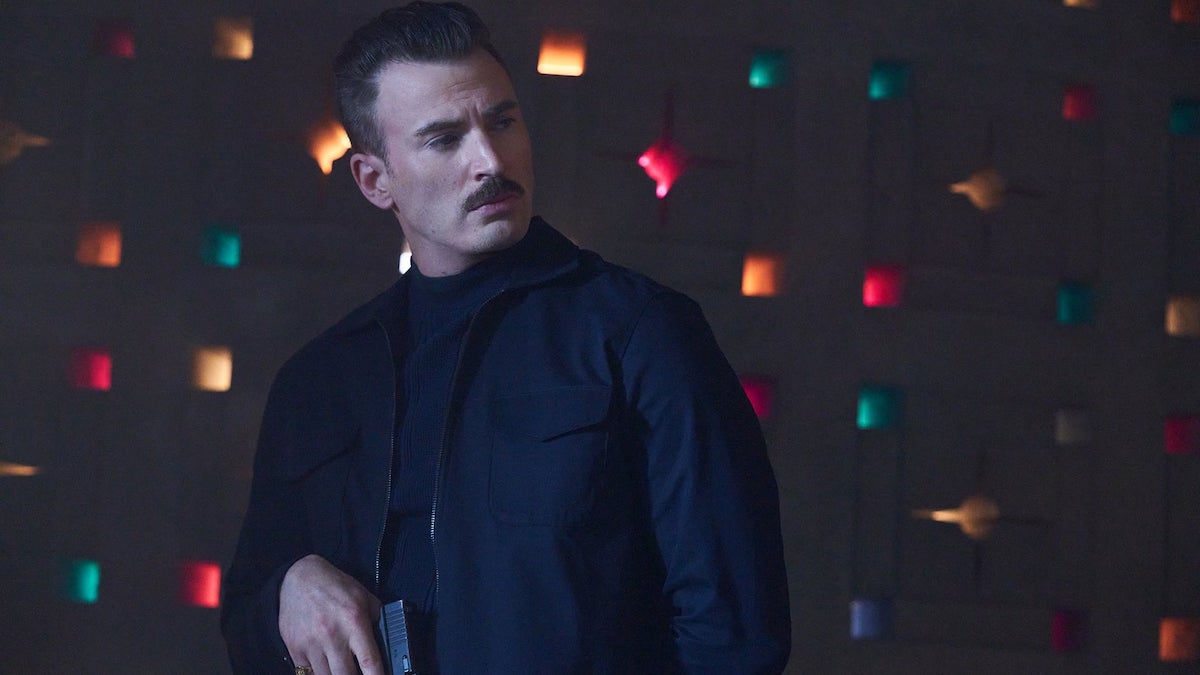
Those characters compound their general evilness, too, by kidnapping the daughter (Juliet Butters) of the retired Fitzroy, who’s become Six’s friend over the years, in an attempt to persuade Fitzroy to turn against Six.
So Six now has two imperatives: to escape assassination himself and rescue Fitzroy and his girl. These he pursues with the aid of the initially sceptical Dani (Ana de Armas), and the story plays itself out in the expected fashion in a series of international locations—Prague, Vienna, Berlin, Hong Kong, Baku—which seem weirdly underused. You find yourself thinking they might as well all be the same city, and this is explained by the fact they are indeed all shot in Prague.
As with most films of this kind, the narrative is primarily a skeleton on which to hang specific scenes, all of them self-consciously and precisely constructed. A fight with flares fills a plane with pink smoke and is followed by a mid-air struggle for a parachute, for example. At another point, Six contrives a clever escape from a well into which he’s fallen through a concealed trapdoor! A preposterously complicated and destructive car chase through Prague is one of the better sequences.
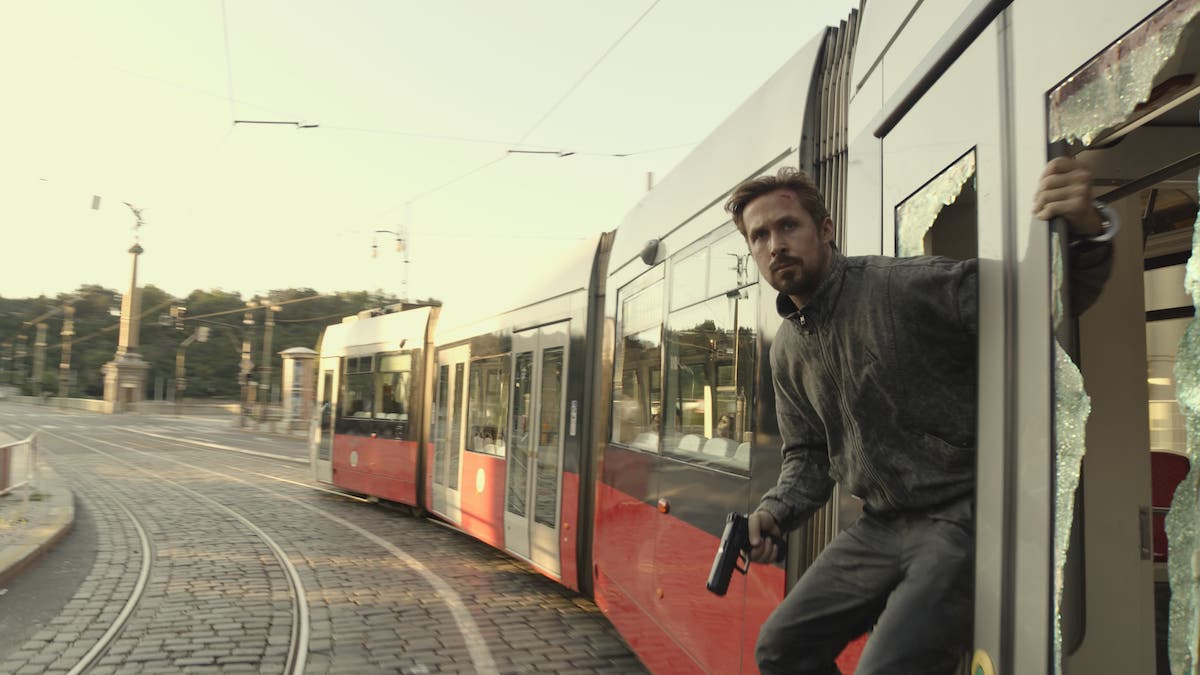
But given the narrative and characters only exist to enable such scenes, the film stands or falls on the action, and too often than not The Gray Man falls. This is most notable in one of the film’s major set pieces, where Hansen’s men, Czech SWAT teams, and Six himself, are caught in a long battle outside the Prague Rudolfinum (called “the opera house”). Ordnance there is aplenty, but—even with Six handcuffed to a wall in the midst of the firefight—there’s absolutely no sense of urgency, goal, or danger. We should be worrying whether Six can free himself in time, we should be feeling the successes and setbacks of the opposing forces… but instead, the episode is strangely uninteresting.
The characters, of course, are largely stereotypes. They have to be as there’s no time to fill them out, despite flashbacks to Six’s abuse as a child in a rather strained attempt to give him some complexity, and a more convincing flashback to his first encounters with Fitzroy’s daughter, where Butters’s nicely sardonic performance has a chance to shine. (“Six is an odd name,” she says. “Yeah, 007 was taken,” he replies, in a rare moment of self-acknowledgement in The Gray Man.)
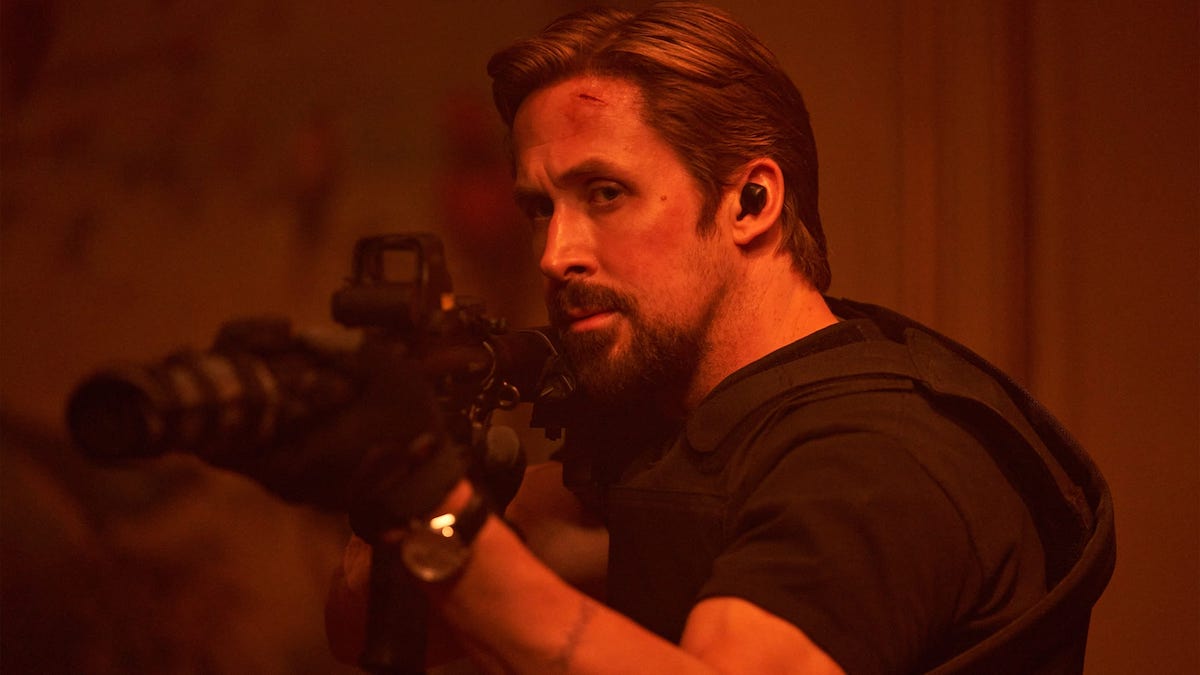
But at least a few of them are satisfying stereotypes. Thornton’s as watchable as always in the role given so often to Donald Sutherland; Page is suitably steely as the amoral CIA villain; Wagner Moura campily overplays the role of a forger/hacker whose help Six tries to enlist. Apart from young Butters, though, the stand-out is Evans as Hansen, mixing a cynical coldness with a touch of the effete. He’s just about the only character about whom you’d like to know more! By contrast, Gosling goes through the motions robotically in a role where the glimpses of humanity are obviously calculated to offset the character’s main function as a killing machine and lacks conviction as a result.
The two principal women in the cast (de Armas as Dani and Jessica Henwick as a CIA officer sent to supervise Hansen) are almost devoid of identity, though Alfre Woodard as an older agent has some presence and seems suitably amused by all these shenanigans. But the main male-female relationship in the film is that between Six and Fitzroy’s young daughter, a girl of about 12. Unable nowadays to emulate Bond’s cheerful caddishness toward women, Six evades involvement with them altogether, lest it gets in the way of the killing.
The Gray Man isn’t a terrible film because a few of the action sequences are decent enough, though others simply fail to deliver the excitement which is their only purpose. And if it lacks originality in plotting or depth in characters, that was clearly never its point anyway. The problem is it’s not a good movie either; there are countless other action thrillers delivering exactly the same thing in more or less the same way, and it’s difficult to identify anything that a single Gray Man movie adds, let alone a whole series of them.
USA | 2022 | 122 MINUTES | 2.39:1 | COLOUR | ENGLISH

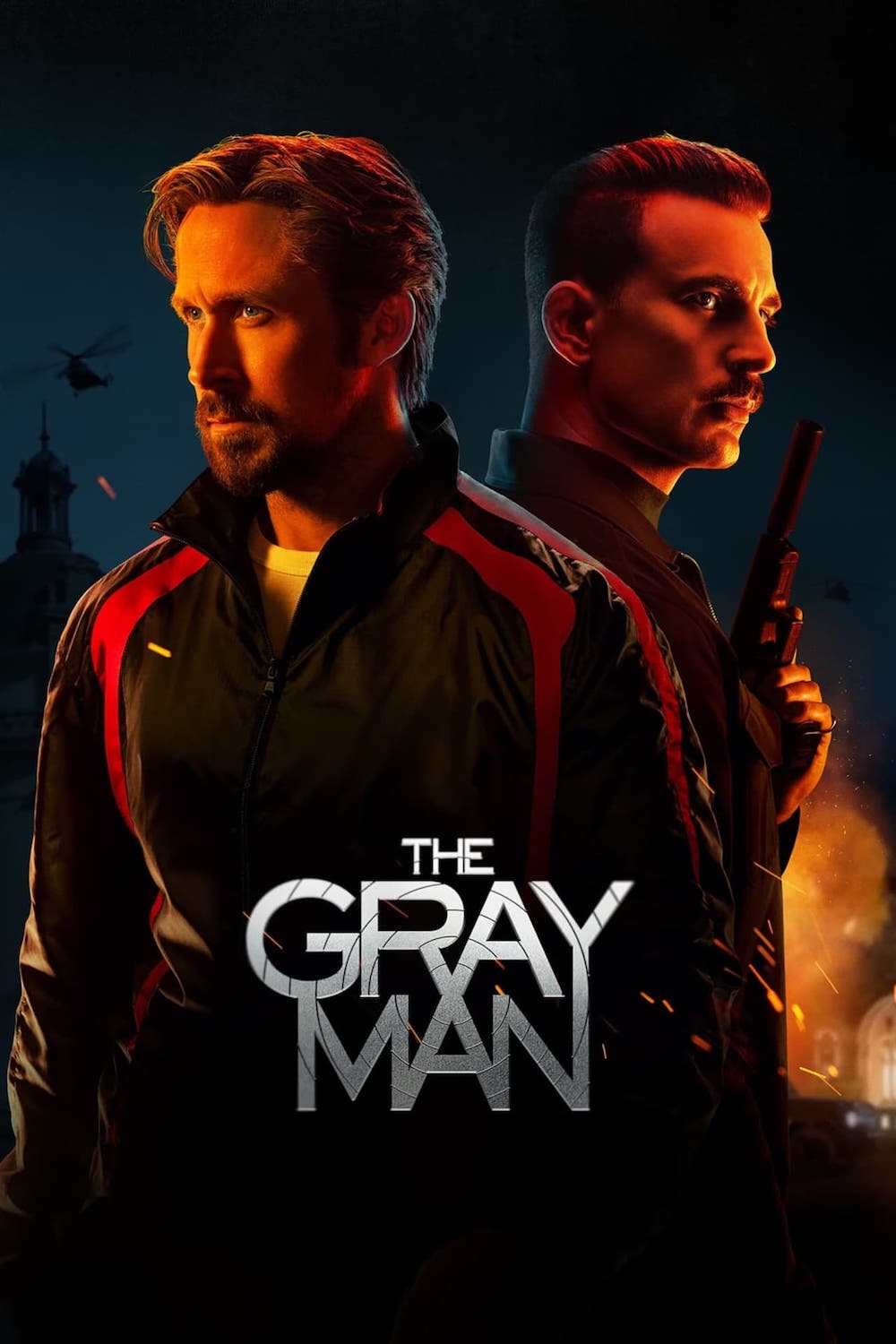
directors: Anthony Russo & Joe Russo.
writers: Joe Russo, Christopher Markus & Stephen McFeely (based on the novel by Mark Greaney).
starring: Ryan Gosling, Chris Evans, Ana de Armas & Billy Bob Thornton.
